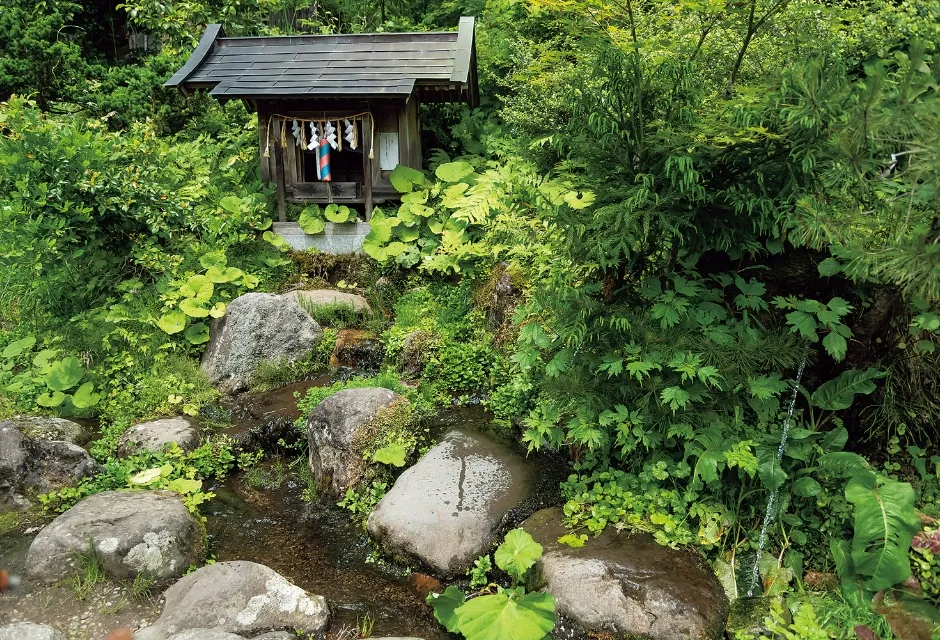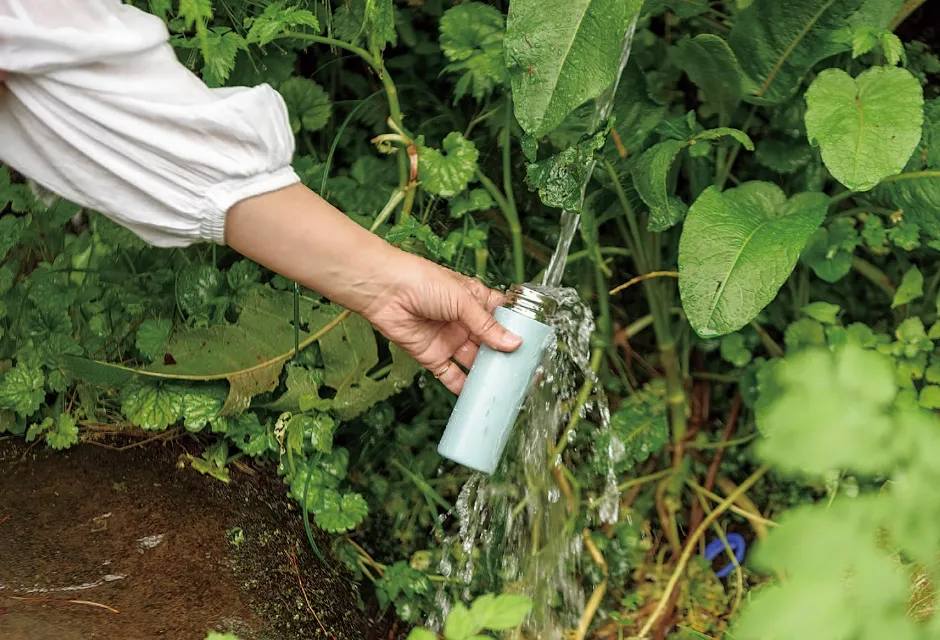Special Feature
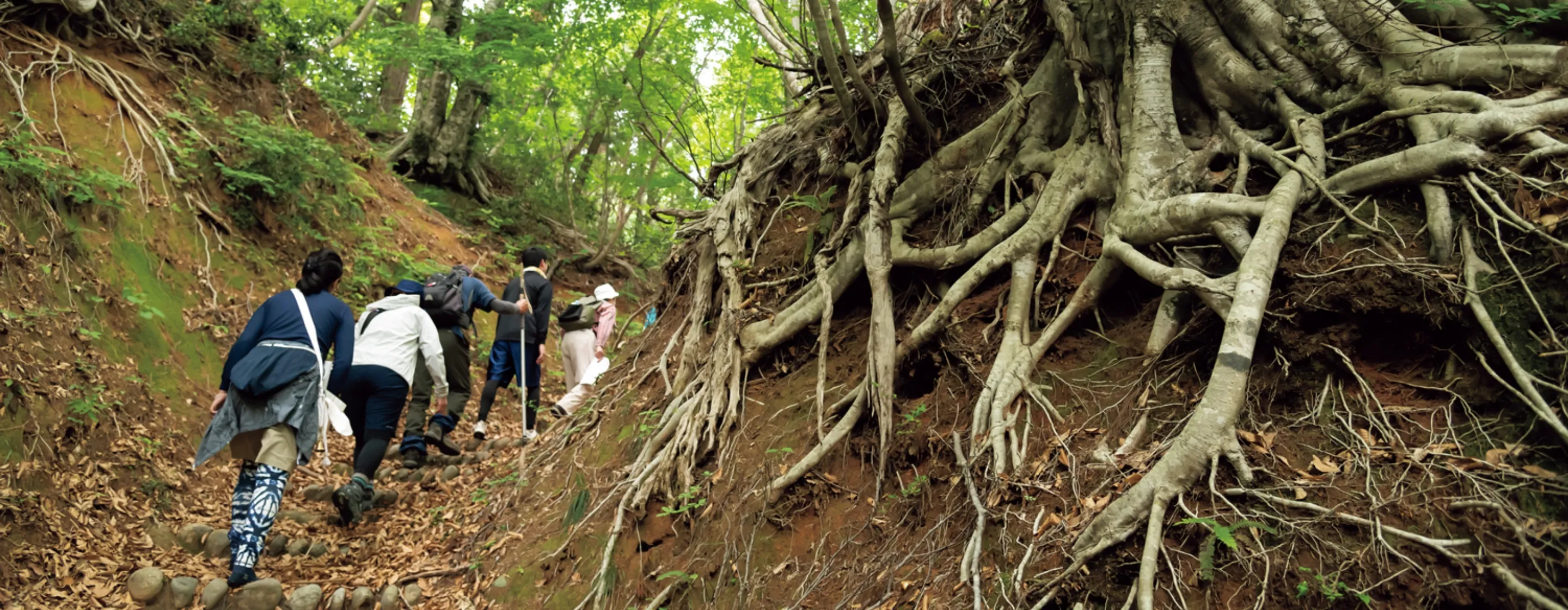
Climbing Mt. Kinbo
Located on the southern side of the Shonai Plains, Mt. Kinbo is known for being a grueling training site of Shugendo mountain asceticism and as a place of ancestor spirit worship. At the same time, the mountain has always been a part of people’s lives and loved by the local community. You can drive to Naka no Miya Shrine, halfway up the mountain’s height of 471 meters, then get out and hike up a steep mountain trail to Ichibo-dai lookout near the mountain’s summit, where you are treated to a view of Mt. Chokai in the distance towering over the Shonai Plains. The grandeur of this scenery was recognized in 1941, when Mt. Kinbo was designated as a National Place of Scenic Beauty.
Mt. Kinbo has been home to Buddhist temples as far back as 671 and a destination for Shugendo mountain ascetic training since ancient times. During the Edo Period (1603–1868), it flourished as a sacred object of mountain worship in Shugendo along with Mt. Haguro and Mt. Chokai. The Shugendo mountain religion was abolished in the Meiji Period (1868–1912), in part by the government order to separate Shinto and Buddhism. Worshippers continued to come here, however, and the mountain became popular among the general public after World War II as a destination for recreation and a site for holding community events. We set out to find out why people continue to visit this mountain and discover its history and secrets.
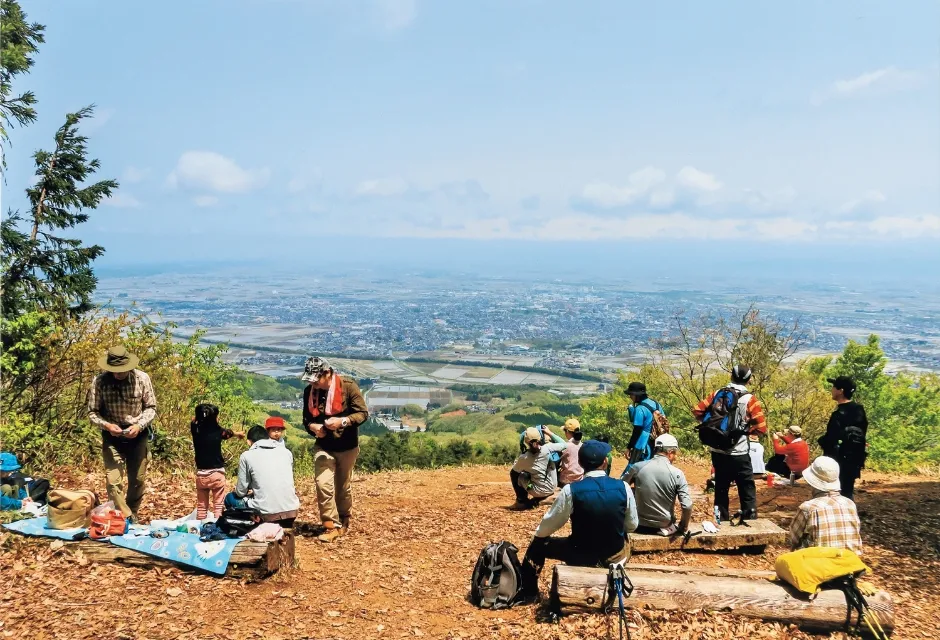
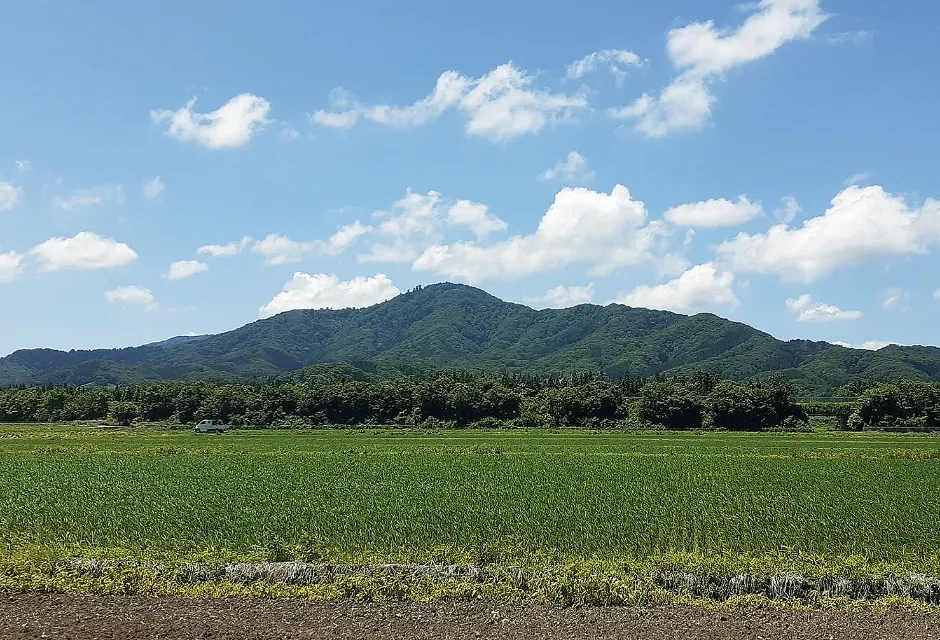
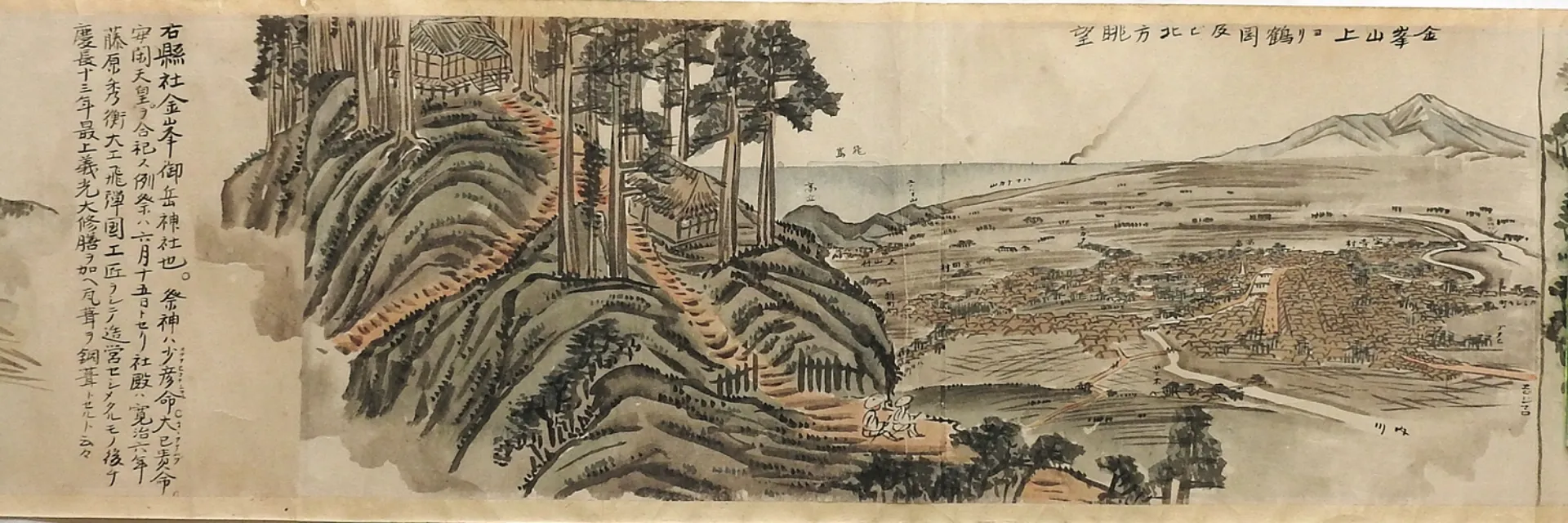
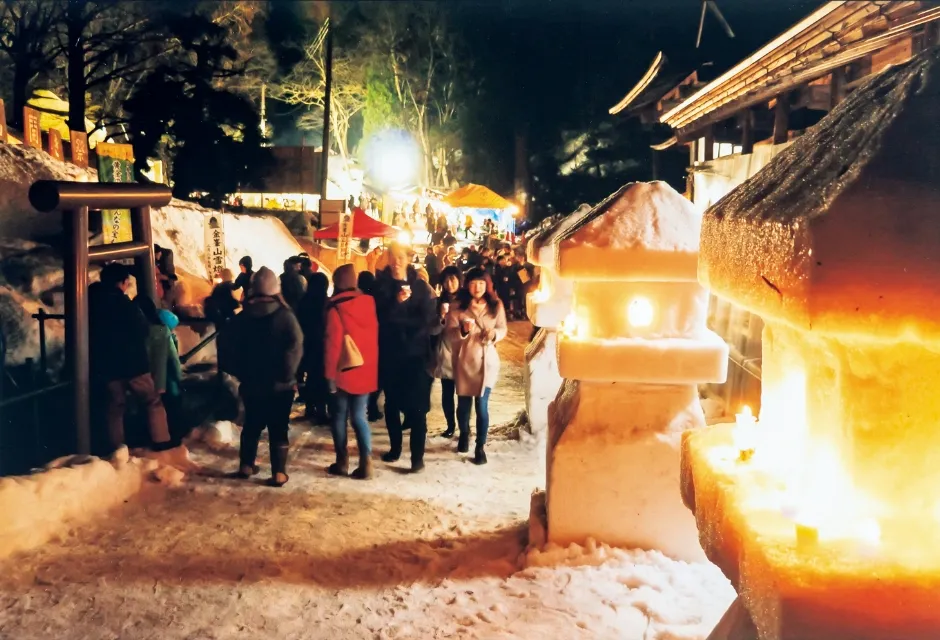
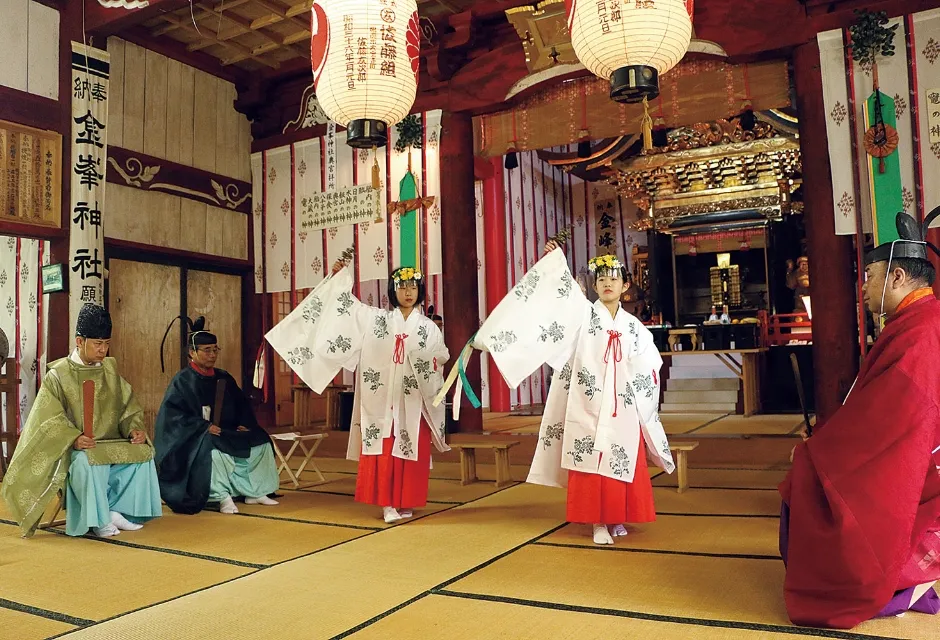
Stories Told by Ancient Monuments
The Shoryu-ji Temple route starts at the Ichi no Torii first gate and continues up a walking path that leads to the main hall of Kinbo-jinja Shrine at the top of the mountain after going through Naka no Miya Shrine. In the old days, many people used to take this route up the mountain and then go down the other side over the Fujisawa route, where they would visit the hot springs area of Yutagawa before going home. Today, you can drive partway up the mountain to Naka no Miya Shrine on the paved road that opened in 1966, but we decided to walk the ancient path from the Ichi no Torii at the base of the mountain to its summit with our guide, Eiichi Sakai.
The Ichi no Torii is surrounded by deep green forest. Many temples and shrines are clustered around this area, including Shoryu-ji Temple and Rokusho-jinja Shrine, which flourished as centers of learning during the Edo Period. The mountain path is lined with stone monuments, including Jizo statues made in the image of Jizo Bosatsu, the guardian deity of children and travelers. After walking a ways along the paved road, we pass between two large stone pillars and start walking up the path leading to the shrine. Many stone monuments of all sizes can be seen along the way, including a sake bottle monument that represents prayers for temperance.
Shigeshi Shoji spent three years researching 1,052 stone monuments found here and published the guide “Inori no Kinbozan: Kohi no Michi” (Mt. Kinbo of prayers: path of old stone monuments) in 1995, in which he describes 73 of them in detail. Shoji worked to restore many stone monuments that had been abandoned long ago and had toppled over as well as been buried under the earth or mountain streams. We came upon many stone monuments as we walked deeper into the forest, including a monument dedicated to Kasugayama Shikaemon (1815–1859), a sumo wrestler who was born in Kuromori, Sakata City, and one dedicated to Sakana-cho in Tsuruoka City.
We cross a stone bridge and take a side path to Fudo Waterfall in front of Sakuratani-jinja Shrine. We keep walking until we reached a place with many stone monuments that have the kanji character for “grave” inscribed on them. According to Sakai, “These are not graves. They are monuments from disciples and students commending and memorializing their master or teacher.” A memorial service to pray for the prosperity of the descendants of Shonai region ancestors is held at Naka no Miya Shrine on Mt. Kinbo every year on July 14. Mt. Kinbo is still a place of worship for regular people, as it has been since ancient times.
As we walk in the cedar forest for about 40 minutes, we pass by old stone monuments, put our hands together to pray at shrines, and sometimes get out of breath climbing up steep slopes before reaching the Zuishin Gate of Naka no Miya Shrine.
Following the Ancient Path
The area around Naka no Miya Shrine was formerly overseen by three officials assigned here to lead the Shugendo religion. One of them resided at Nantoin Temple, which is currently a shrine administrative office. Here we met Takayoshi Sasaki, the chief priest of Kinbo-jinja Shrine.
Formerly, mountain ascetics would gather in Fukikoshi Hall, where they would shut themselves away to undergo training, a little bit farther up the mountain from Naka no Miya Shrine. As Sakai says about the several foundation stones that mark the remains of the former hall, “This used to be an ascetic training hall, but after Shugendo was abolished, the building fell into disrepair and its location became lost to time. This place came to attention in research done as part of municipal preservation and utilization planning. We all searched hard and were really happy when the foundation stones of the building were discovered.” The research team dreams of one day rebuilding the training hall. Starting from here, mountain ascetics would spend about a week running around Mt. Kinbo to the west following a prescribed route. After summitting and praying to the mountain, they would return to Fukikoshi Hall to fast for 17 days and complete the roughly one-month training regimen.
We leave Naka no Miya Shrine and next head to Sannosaka slope, aiming to summit the mountain. The steep inclines sometimes leave us out of breath. Shortly after getting a view of Mt. Hokari from the Hakkei-dai lookout, we reached the main shrine hall at the top of the mountain. Kinbo-jinja Shrine has many stone monuments and tablets inscribed with the names of mountain ascetics that completed training on the mountain and the date when they did it. Prayers written on them include wishes for the safety of Tsurugaoka Castle, for calm in the world and for peace in Japan.
Standing at the Ichibo-dai lookout slightly below the summit, we are treated to views of Mt. Chokai to the north, the Sea of Japan and Tobishima in the distance, and the Shonai Plains below. You can see clusters of buildings, cars driving along and people leading their lives from the mountaintop 471 meters above. The scenery illustrates how Mt. Kinbo has been a part of people’s lives and how important it has been to them.
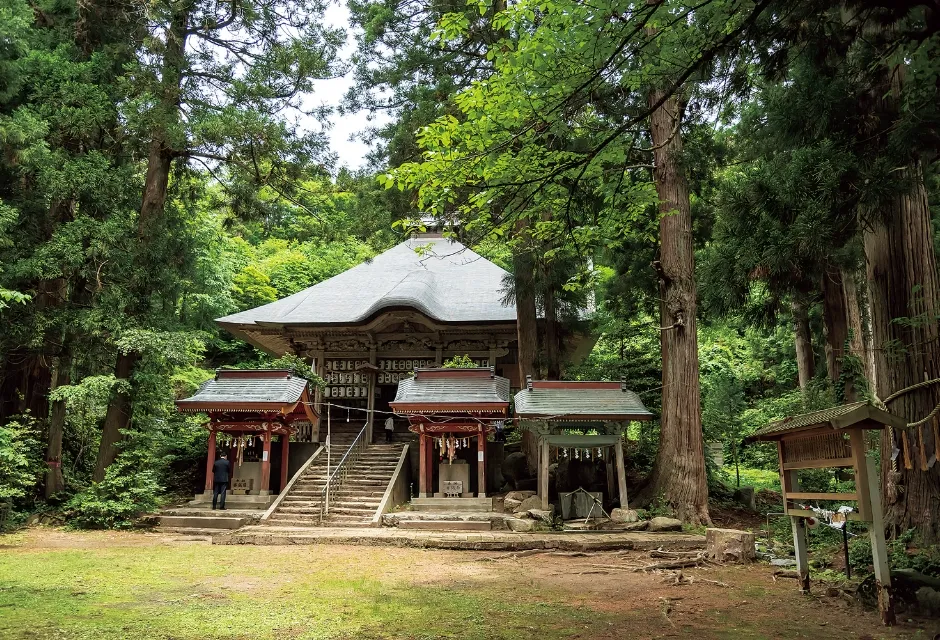
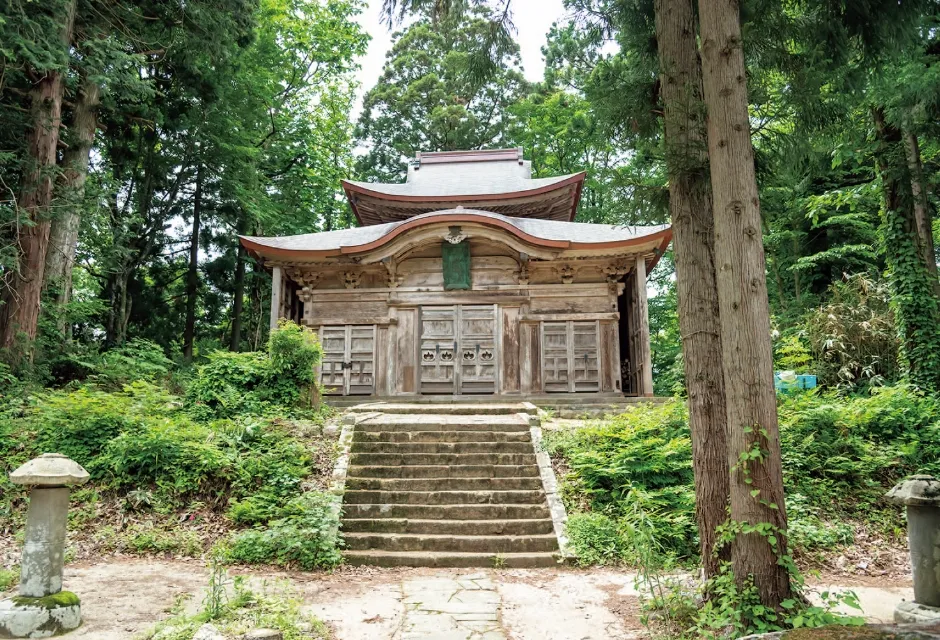
Mt. Kinbo Stone and Famed Spring Water
“Mt. Kinbo is an excellent mountain. Speaking to its natural environment, it has hard, high-quality rock and pure water.” This is how geologist Hohei Uematsu describes the mountain, and we turn our attention to its natural environment as we descend from the summit.
Based on the geological map of Yamagata Prefecture that Uematsu showed us, a stretch of land to the south of Mt. Kinbo contains the oldest geological period in the Shonai region. “Knowing Mt. Kinbo means knowing the oldest base layer of the Shonai Plains,” he explains.
Mt. Kinbo’s strata consist of sedimentary rock up to the middle of the mountain and granite from there to the summit. “Granite is the main rock in the Earth’s crust. It has been used as building material due to its hardness and the fact that it does not easily break,” he notes.
We know from ancient records that granite taken from Mt. Kinbo, called Kinbo stone, has also been used for various purposes, including for castle stones at Tsurugaoka Castle, the stone basin used for ceremonial purification at Sanno Hie-jinja Shrine, stone monuments and gravestones, bridge piers and in retaining walls. “We’ve found lots of places on the mountain where you can see that stone was cut away,” says Uematsu. These marks from stonecutting span the Edo Period to the modern day.
Many streams run through Mt. Kinbo and its former stonecutting sites, and the sound of running water can be heard while hiking the mountain. In front of the shrine office for Kinbo-jinja Shrine is the location of the famed Akai underground spring water, which many people make trips to collect. According to Kiyoshi Yawata of the Mt. Kinbo Tourism Association, “The water stays around 12℃ year-round and is very soft with good mineral balance.” When it rains, you can also see the sparkle of phlogopite, a mineral in granite that runs through the ground around here. “Mt. Kinbo’s water is clean and pure because it’s filtered by the layer of granite, which it runs through and which absorbs impurities,” comments Yawata.
Visitors who come here will discover firsthand the secrets to why people have been visiting Mt. Kinbo for generations.
